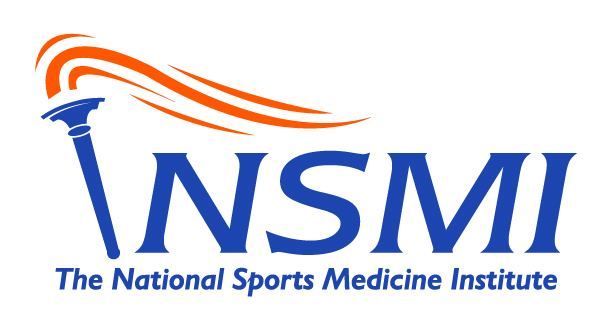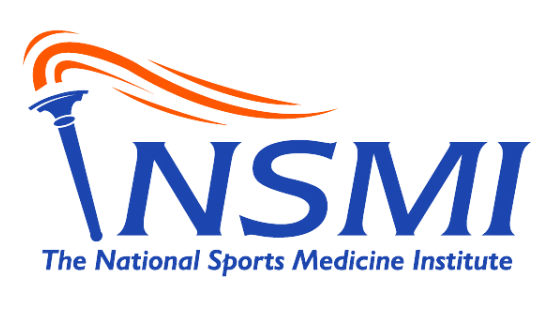At the National Sports Medicine Institute, we want to make sure you have a positive experience before, during and after your surgery. In order to optimize the safety and outcome of your surgical procedure, your surgeon will provide you with post operative instructions specific to your procedure. If you misplace this information, please contact the Athletic Trainer assisting your surgeon. These are general guidelines for postoperative care that can be used by most patients following surgery.
The following information is designed to help you understand what to expect and what to do after surgery. Since every surgical case is unique, your surgeon may give you further or differing guidelines. Please follow your surgeon’s instructions. If you have any questions or concerns, please contact our office.
Surgery Center
In the recovery room you may experience mild nausea, disorientation, and occasionally shivering. Please coordinate a ride to and from the surgery center. Post-operative medication can be picked up from your desired pharmacy and should be coordinated prior to surgery when possible.
INOVA Loudoun Ambulatory Surgery Center
44035 Riverside Pkwy Ste 200
Leesburg, VA 20176
Phone: (571) 209-6465
Stone Springs Ambulatory Surgery Center
24570 Medical Drive
Sterling, VA 20166
Phone: (571) 367-6700
Wound Care
The surgical incision(s) will be covered by sterile gauze pads and may be covered with an ace bandage. Water used to irrigate the incision during surgery may leak through the incision, saturating the bandage. This blood-tinged drainage may persist for 24-36 hours. If it has not significantly decreased by this time or if you have any concerns, please call our office.
Some discomfort and bruising is to be expected following surgery.
You may experience a variety of transient symptoms in the area of the wound, including itchiness, increased sensitivity to touch and numbness.
Frequently a nerve block is used to decrease postoperative pain. As a result, it is not unusual to feel numbness in the extremity where surgery occurred. This numbness usually resolves within 12-24 hours; however, if the numbness persists beyond this time frame or you have any concerns, please contact the office.
You may shower 2-4 days after surgery. If your doctor has instructed you to keep the area dry, tape a plastic bag around the area while showering; otherwise, remove the dressing, except the steri-strips. After showering, carefully pat the area dry, allow the area to air dry, and re-apply clean dressing.
Even after you are allowed to get the area wet, do not scrub the area. Let the water run over the incision and wash gently with chlorhexidine or soap and water, pat dry and cover with a clean dressing until the stitches, staples or steri-strips have been removed.
If your incision(s) shows any sign of infection, please contact our office immediately. Signs of infection include increased redness, persistent drainage, significant fever, sudden increase in pain and/or abnormal smell.
Crutches and restricted activities are very important following your surgery. Incisions are especially prone to persistent drainage if they are overly irritated by activity. This drainage can lead to infection. Please try to curtail your activities to allow the incision(s) to heal properly.
Swelling
Swelling will occur after your surgery. While it is a normal response to the surgery, it can contribute to your pain and complications with the surgical incision. Follow your surgeon’s specific instructions for elevation, icing, limited activity, and use of anti-inflammatory medications to keep swelling to a minimum.
If the dressing covering the surgical site feels too tight, you may loosen it. This may alleviate the swelling near the surgical site.
If your surgery involves the foot, ankle, knee, elbow or wrist, elevation of the extremity above the level of your heart is very helpful in minimizing discomfort and swelling, especially in the first 48 hours following surgery. Your level of discomfort will most often be your best guide in determining how much activity is allowed. Remember that it is very easy to overdo it in the first few days after surgery, and any increase in pain or swelling usually indicates that you need to decrease your activities.
Icing
If you will be using a Cold Therapy Unit, bring the unit and the pad with you so that the pad may be applied in the operating room and the therapy unit may be utilized during recovery. You may continue to use the unit as directed until your follow-up appointment.
If you are not using a Cold Therapy Unit, ice may be applied during the first 48 hours and can be helpful to decrease pain and swelling. Ice bags/packs should never be applied directly to the skin. If the skin becomes very cold or burns, discontinue the ice application immediately.
Postoperative Medication
You will receive prescriptions for use post-operatively after surgery, prior to discharge. These will be sent electronically to the pharmacy you have selected to be on file with our office. Please choose a pharmacy that is convenient to your home and within your health insurance plan requirements. For refills, call the pharmacy, and they will contact your surgeon for approval.
DO NOT drive or drink alcohol while taking post-operative prescriptions.
Pain medication often causes drowsiness and we advise that you do not drive, operate machinery or make important decisions while taking medication. Narcotic pain medications may also cause constipation. Increase your water and fiber intake to decrease this risk. If you have any difficulty with itching, nausea, or other side effects, call our office immediately. Our answering service is available to page the surgeon on call after office hours.
Exercise and Physical Therapy
Physical therapy will be prescribed specific to your type of surgery. The purpose of physical therapy is to help you regain mobility, strength and expedite your recovery.
If you were given a set of exercises, be sure to start them according to your surgeon’s instructions.
If your surgery involves the shoulder, hand, wrist, or forearm, move fingers aggressively to form a fist several times an hour, unless specifically instructed otherwise. This will minimize the chance of stiffness developing which can be difficult to overcome later.
Additionally, if your surgery involves the shoulder, opening and closing your hand, and/or bending and straightening the elbow repetitively, is helpful.
Bracing and Assistive Aids
Your surgeon may have prescribed or applied a sling, brace, splint, or immobilizer. Be sure to use this equipment as instructed.
You should continue to use any braces, splints, slings, and immobilizers until specifically told otherwise by your surgeon.
If you are going to be using crutches, walker, cane, or other assistive devices, it is often helpful to practice walking with the device prior to surgery if possible. Please be careful on slippery surfaces, steps or anywhere you might fall and injure yourself.
Returning to Activities of Daily Living
You may return to your regular activities as directed by your surgeon, the postoperative rehabilitation protocol and as pain allows. Any increase in pain or swelling usually indicates that you need to decrease your activities.
Following surgery, it may be necessary to restrict you or your child’s participation in sports. Restrictions in sports and/or activities are often indicated for a period of time and are a necessary component of a long-term, successful surgical outcome.
Returning to Work
You may return to work once you feel performing your regular job is possible and you have been cleared by your surgeon.
Driving
Please coordinate a ride to and from the surgery center and to the pharmacy for the day of your surgery. You will be unable to drive while on narcotic pain medications. You may drive when you have discontinued taking narcotic medication and have been cleared by your provider. For lower body surgery, clearance typically does not occur until a patient is full weight bearing through the right foot if that is the side of the operation. For upper body surgery, clearance typically does not occur until it is safe to perform activities out of the sling/shoulder support. Specific restrictions for each surgical procedure differ, please contact our office with any questions you may have.
Air Travel After Surgery
It is recommended you do not travel by air until day 4 post-op, due to risk of blood clots. If your circumstances necessitate you to travel by air earlier than day 4 post-op, please discuss this with your surgical team several weeks prior to surgery.
Family Medical Leave and Short-Term Disability
If you have discussed with your employer taking leave for the recovery from surgery, please submit all forms, a copy of your job descriptions, length of time requesting off and any accommodations that you are requesting to the athletic trainer assisting with your care prior to the start of your leave. There is a fee associated with the completion of these forms. If you have any questions, please call our office at 703.729.5010.
First Postoperative Appointment
Your first postoperative appointment will be within 10 – 14 days following your surgery. The date and time can be found in your pre-operative packet. Any questions regarding your pain management, recovery, and return to activity can also be answered at that time.
Communications
Contact our office immediately at 703.729.5010 to speak with an athletic trainer on staff if you are having any problems. If the office is closed when you call, you will be forwarded to the answering service who will page the surgeon on call.

